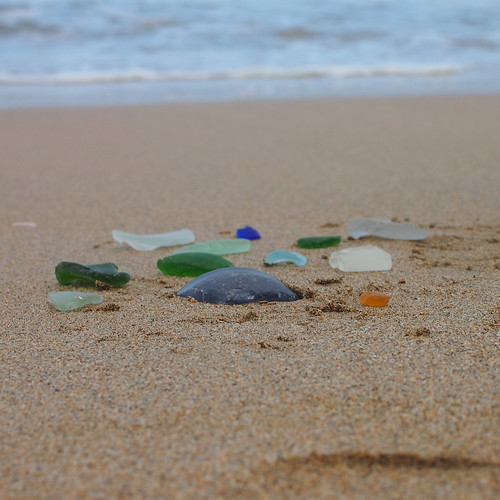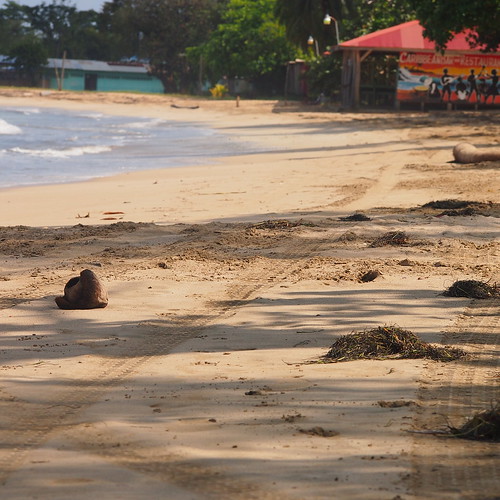Like precious gems, sea glass is rare and beautiful. Sea glass has been found for as long as there has been glass. Legends tell that every time a sailor drowned at sea, the Mermaids would cry and their tears would wash ashore as sea glass.

The making of glass has been around since 3,000 B.C., when it was first created by the Sumerian Civilization. From then on, sea glass has ended up sprinkled over beaches around the world. But how exactly is sea glass created, we ask ourselves? Sea glass is created when shards of glass are discarded into the ocean. In the olden days, it was popular to throw your trash into the ocean instead of creating landfills. Naturally, an abundance of glass was discarded into the sea.The way the glass attains a frothy, sharpless look is by the glass crashing and rubbing against the shore with the waves. In this way, the glass achieves its unique look through a natural tumbling proccess.

The best place to find sea glass is in old ocean dumping sites, coves, and harbors. Harbors are great for finding sea glass, because sailors have thrown out old bottles. Beaches that have crashing waves are also a good spot to check for sea glass, because crashing waves help the sea glass to become tumbled easier and faster. These beaches also pull more sea glass to the shore with the very motion of the waves. The best time of the day to find sea glass is when there is a low tide. To find sea glass and other treasures, look at the high tide line that will generally have a trail of beach pebbles and shells. Here you will find precious sea gems glistening in the sun.
Sea glass colors can range from white (which is common), to reds and oranges (being extremely rare). The most common sea glass colors to find are white, green, and brown. These colors of glass come from windows, soda and wine bottles, windshields, and tableware. Moving up the scale of rarity, we have soft green, soft blue, forest green, lime green, and amber. These colors come from old Coca-Cola and beer bottles, canning jars, ink bottles, and some medicine bottles. Very rare colors are cobalt blue, pink, aqua, cornflower blue, opaque white, and purple red, turquoise, yellow, black, teal, and gray. These gems come from old antique medicine bottles, glass containers that held food, perfume bottles, old flasks, tableware, and decorative glass.

My typical day of beachcombing for sea glass starts out by grabbing my sand pail and heading toward the beach. I spend much time greeting people with an “Hola” and “Buenas Tardes” as I pass. The sun shines down brightly, reflecting off the clear blue water. I walk 300 yards before I reach the golden spot, where I find buckets full of sea glass. I reach down to pick white and brown pieces of sea glass up before the tide sweeps them away again. Finding big pieces of green, white, and brown are very common. Yellows, teals, dark greens, and colbalt blues show up more often than not. Every day I repeat this on my quest for a 5 gallon bucket full of sea glass. The more I beachcomb for sea glass, the less I begin to find. With each piece of treasured sea glass I find, I ponder about the past life this glass had. Who used this glass? How old is it? What was it used for? Sometimes I just make up the history behind it.
Sea glass that you may find has the potential to be very old. From where the glass comes, or what era in time, no one can ever know. This sea glass has washed ashore on the beaches of Panama, a country known for its rich history of pirates, explorers, and adventurers with names like Captain Morgan, Christopher Columbus, and Sir Francis Drake. With each piece of sea glass found, you have captured a piece of Panama’s history. This is why it is important to research where you are going to look for sea glass. Chances are you could have a very old, unique piece of sea glass in your hands.
What will you have found on the beach after a long days’ worth of beach combing for sea glass?
Shelby Lewis is a member of the Youth Travel Blogging Mentorship Program
All photos courtesy and copyright Shelby Lewis
